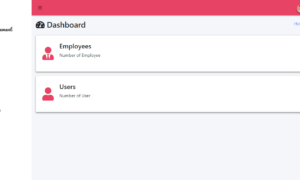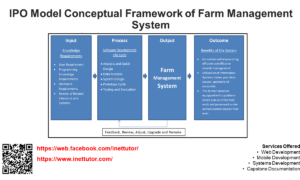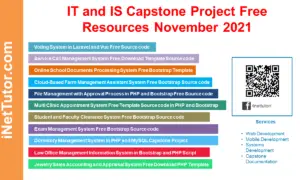Capstone Project Topics for Library System
Overview of capstone project topics in the context of library systems
Table of Contents
- Overview of capstone project topics in the context of library systems
- Importance of capstone projects in enhancing library operations and user experience
- Benefits of Capstone Projects for Library Systems
- List of blog posts related to library system
- Best Practices for Developing Capstone Projects in Library Systems
- Future of Library Automation System
- Summary
In the realm of library systems, capstone projects play a crucial role in bringing innovation, efficiency, and improved user experiences. Capstone projects serve as a culmination of students’ academic journey, allowing them to apply their knowledge and skills to real-world scenarios in the context of libraries. These projects offer an excellent opportunity to address various challenges faced by libraries and explore new possibilities for transforming their operations.
Capstone projects in library systems focus on developing and implementing solutions that enhance the overall functionality and effectiveness of libraries. They involve creating and integrating innovative technologies, designing user-friendly interfaces, and streamlining processes to meet the evolving needs of library users.
One key aspect of capstone projects in library systems is the utilization of modern technologies. This can include the implementation of integrated library systems (ILS) to automate tasks like cataloging, circulation, and resource management. It may also involve leveraging radio frequency identification (RFID) technology for efficient tracking of library materials and implementing self-checkout systems for enhanced user convenience.
Moreover, capstone projects in library systems often emphasize the development of user-centric applications. This can range from building mobile apps that allow users to search and access library resources on their smartphones to creating recommendation systems powered by artificial intelligence (AI) algorithms. These advancements provide personalized reading suggestions, promoting discovery and engagement with library materials.
Furthermore, capstone projects explore the integration of emerging technologies such as virtual reality (VR) to offer immersive learning experiences within libraries. By creating virtual spaces for exploration and interactive learning, libraries can engage users in new and exciting ways.
Capstone projects in library systems are catalysts for positive change and progress. They empower students to apply their technical expertise, creativity, and problem-solving skills to create practical solutions for the challenges faced by libraries today. By embracing these projects, libraries can enhance their offerings, provide a more seamless user experience, and adapt to the ever-changing digital landscape.
Importance of capstone projects in enhancing library operations and user experience
Capstone projects play a crucial role in enhancing library operations and user experience by bringing innovation, efficiency, and improved services. These projects provide a platform for students to apply their knowledge and skills to real-world library scenarios, resulting in tangible benefits for both libraries and their patrons.
One of the key benefits of capstone projects in libraries is the opportunity for process automation. By developing integrated library systems (ILS) or leveraging advanced technologies, students can streamline tasks such as cataloging, circulation, and resource management. This automation reduces manual efforts, increases accuracy, and allows library staff to focus on more value-added activities, ultimately improving operational efficiency.
Capstone projects also contribute to the enhancement of the user experience within libraries. Through the development of user-centric applications and interfaces, students can create intuitive search interfaces, personalized recommendation systems, and mobile apps that provide seamless access to library resources. These improvements make it easier for library users to find and utilize materials, promoting greater engagement and satisfaction.
Additionally, capstone projects enable the integration of emerging technologies into library operations. Students can explore the use of technologies like artificial intelligence (AI), virtual reality (VR), or augmented reality (AR) to enhance learning experiences within libraries. For example, VR can offer immersive virtual tours or interactive storytelling sessions, while AI-powered chatbots can provide instant assistance to library users. These technological advancements not only enrich the user experience but also position libraries as innovative and forward-thinking institutions.
Furthermore, capstone projects encourage collaboration and knowledge sharing among students, library staff, and the broader library community. Students can engage with library professionals, gather feedback, and incorporate valuable insights into their projects. This collaboration fosters a culture of continuous improvement and helps libraries stay up to date with evolving user needs and expectations.
Capstone projects are instrumental in enhancing library operations and user experience by driving innovation, process automation, and the integration of advanced technologies. By embracing these projects, libraries can provide modern, user-friendly services, increase efficiency, and create a dynamic and engaging environment for their patrons.
Benefits of Capstone Projects for Library Systems
Capstone projects bring numerous benefits to library systems, revolutionizing the way resources are organized, accessed, and utilized. Here are some key advantages of capstone projects for library systems:
- Improved organization and accessibility of library resources:
Capstone projects provide an opportunity to develop integrated library systems (ILS) that enhance the organization and accessibility of library resources. By implementing efficient cataloging and classification systems, students can ensure that materials are properly labeled and easily searchable. This streamlines the process of locating and retrieving resources, saving time for both library staff and patrons.
- Streamlined borrowing and return processes:
Capstone projects often focus on developing innovative solutions for borrowing and return processes. By implementing self-checkout kiosks or mobile applications, students can create user-friendly interfaces that allow patrons to borrow and return items with ease. This automation reduces waiting times, improves circulation management, and enhances the overall borrowing experience.
- Enhanced search and discovery functionalities:
Capstone projects enable the development of advanced search and discovery functionalities for library systems. Students can create intuitive search interfaces, implement personalized recommendation systems, and incorporate metadata enrichment techniques. These enhancements enable users to quickly find relevant resources, discover related materials, and expand their knowledge in their areas of interest.
- Integration of digital resources and technologies:
Capstone projects offer an opportunity to integrate digital resources and technologies into library systems. Students can develop platforms that seamlessly integrate e-books, online databases, multimedia content, and other digital resources into the library’s collection. This integration enhances the breadth and depth of available resources, providing users with access to a wealth of information in various formats.
Capstone projects empower libraries to improve the organization and accessibility of resources, streamline borrowing processes, enhance search and discovery functionalities, and integrate digital resources. By embracing these projects, libraries can deliver an enhanced user experience, foster a culture of innovation, and stay at the forefront of technology advancements in the ever-evolving information landscape.
A use case diagram in a library system illustrates the different interactions between users (such as librarians and patrons) and the system itself. It visually represents the functionalities and processes of the library system, including borrowing and returning books, searching for resources, managing user accounts, and generating reports.
- Library System Conceptual Framework:
The conceptual framework of a library system outlines its overall structure and components. It defines the relationships between different entities, such as users, books, transactions, and the system itself. The framework provides a high-level view of how the library system operates and guides the development process by establishing the key concepts, rules, and processes that shape its functionality.
This topic focuses on a library management system built using the Laravel framework, a popular PHP web development framework. The free source code provides a ready-made solution for managing library operations, including book cataloging, user management, borrowing and returning books, and generating reports. It offers a convenient and customizable solution for libraries looking to implement a robust management system.
- Library System Free Download Source code in Bootstrap and PHP:
This topic discusses a library system source code developed using Bootstrap and PHP. The source code can be downloaded and used as a foundation for building a library system. Bootstrap provides a responsive and user-friendly interface, while PHP handles the backend logic and database management. It offers libraries a starting point to create a functional system tailored to their specific needs.
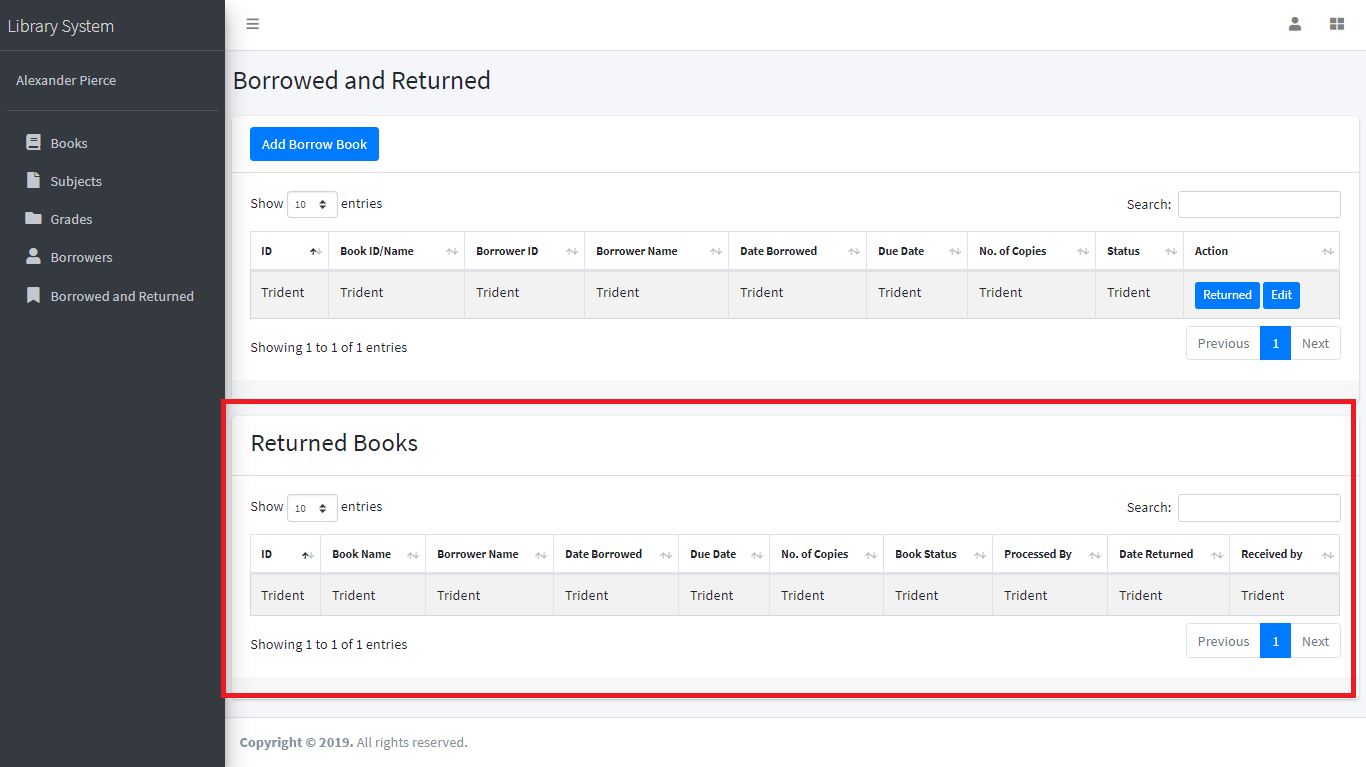
- Android-Based Library Catalog App Capstone Project:
This capstone project focuses on developing an Android-based library catalog app. The app enables users to search for books, view their availability, and reserve or borrow them directly from their mobile devices. It enhances the convenience and accessibility of library services, catering to the increasing use of mobile technology.
- Abstract of Computerized Library System:
The abstract of a computerized library system provides an overview of its purpose, features, and benefits. It outlines the objectives of the system, such as improving resource management, enhancing user experience, and automating manual processes. The abstract also highlights the key functionalities and technologies employed in the system.
- Library Resources Management System Database Design:
This topic explores the database design for a library resources management system. It discusses the structure and organization of the database, including tables, relationships, and attributes. The design ensures efficient storage and retrieval of library data, such as book information, user details, transaction records, and resource availability.
- Mobile Application for Library Resource Materials:
This topic focuses on the development of a mobile application that provides access to library resource materials. The app allows users to browse and search for books, journals, and other resources, view their details, and access digital content. It offers a user-friendly and convenient platform for users to explore and utilize library resources on their mobile devices.
- Automated Library Resources Dispersal System:
This topic introduces an automated library resources dispersal system that simplifies the process of distributing and returning library materials. It may involve the use of self-service kiosks or RFID technology to streamline borrowing and returning processes. The system improves efficiency, reduces waiting times, and enhances the overall user experience.
- Library System in PHP and MySQL User Interface:
This topic discusses the user interface design of a library system implemented using PHP and MySQL. It focuses on creating a visually appealing and user-friendly interface for library staff and patrons. The PHP handles the backend logic, while MySQL is used for database management, ensuring seamless interaction and efficient data storage.
This topic explores the user interface design of a library system that includes computer usage time monitoring. The system tracks and manages computer usage in the library, allowing fair access for all users.
- Library Resources Management System:
A library resources management system is a software application that helps libraries efficiently manage their resources, such as books, journals, multimedia materials, and digital content. It provides functionalities for cataloging resources, tracking their availability and circulation, managing user accounts, generating reports, and facilitating resource discovery. The system enhances the organization and accessibility of library resources, making it easier for librarians and patrons to locate and utilize materials.
- Library Management System Review of Related Literature and Studies:
A review of related literature and studies in a library management system provides an overview of existing research, publications, and projects related to library systems. It explores different aspects of library management, such as resource management, user services, technological advancements, and user experience. The review helps identify gaps, challenges, and opportunities in the field, providing valuable insights for the development and improvement of library management systems.
- Library Management System Capstone Project:
A library management system capstone project involves the development of a comprehensive software solution for managing library operations. It typically includes functionalities such as cataloging resources, tracking circulation, managing user accounts, generating reports, and facilitating resource discovery. The capstone project allows students to apply their knowledge and skills in developing a practical and functional system that addresses the specific needs of libraries.
- Library System Database Design:
Library system database design focuses on the structure and organization of the database that stores library-related data. It includes designing tables, defining relationships between entities (such as books, users, transactions), and establishing data attributes and constraints. A well-designed database ensures efficient data storage, retrieval, and management in a library system.
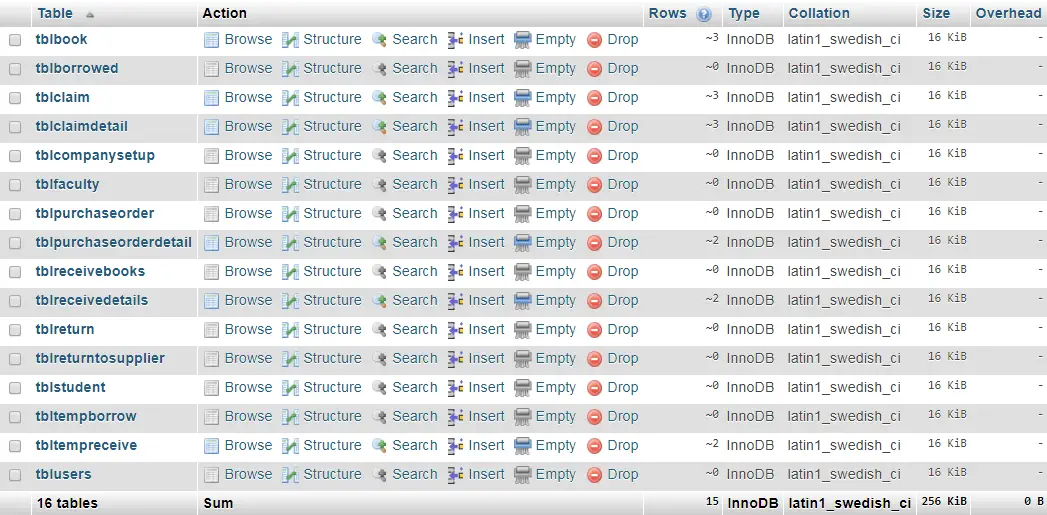
- Computerized Library System in Visual Basic 6.0:
A computerized library system developed in Visual Basic 6.0 is a software solution that automates library operations using the Visual Basic programming language. It includes functionalities for cataloging resources, managing user accounts, tracking circulation, generating reports, and facilitating resource discovery. The system improves the efficiency and accuracy of library management tasks, providing a user-friendly interface for librarians and patrons.
- Smart Library Management System with RFID Technology:
A smart library management system incorporates RFID (Radio Frequency Identification) technology to automate and enhance library operations. RFID tags are attached to library resources, enabling quick and accurate identification and tracking. The system uses RFID readers to perform tasks such as inventory management, self-checkout, security control, and resource location. It improves efficiency, reduces human errors, and enhances the overall library experience.
- Mobile App for Library Services and Resource Access:
A mobile app for library services and resource access allows users to access library resources and services through their mobile devices. The app provides functionalities such as searching and browsing the catalog, reserving or borrowing materials, accessing digital content, managing user accounts, and receiving notifications. It offers convenience and flexibility for users to interact with the library anytime and anywhere.
- AI-powered Recommendation System for Personalized Reading Suggestions:
An AI-powered recommendation system for personalized reading suggestions leverages artificial intelligence and machine learning algorithms to provide tailored book recommendations to library users. The system analyzes user preferences, reading history, and other factors to suggest relevant and engaging books. It enhances the reading experience, encourages exploration of new genres, and promotes user engagement with the library’s collection.
- Virtual Reality (VR) Library for Immersive Learning Experiences:
A virtual reality (VR) library creates an immersive learning environment where users can explore virtual representations of libraries, access digital resources, and engage in interactive educational experiences. VR technology allows users to navigate virtual bookshelves, interact with 3D objects, participate in virtual discussions, and simulate real-world library activities. It offers a unique and engaging way to learn and access library resources.
- Digital preservation and archiving system for rare books and manuscripts focuses on the digitization and preservation of valuable and fragile materials in libraries. The system employs specialized scanning equipment and software to capture high-resolution digital images of rare books, manuscripts, and other historical documents. It includes features for metadata management, indexing, and storage of digital assets. The system ensures the long-term preservation and accessibility of these valuable cultural artifacts, protecting them from physical deterioration and making them available to a wider audience.
- Library Analytics and Data Visualization:
Library analytics and data visualization involve the use of data analysis techniques and visualization tools to gain insights into library operations and user behavior. By collecting and analyzing data on resource usage, user engagement, borrowing patterns, and other metrics, libraries can make data-driven decisions to optimize their services, allocate resources effectively, and improve the user experience. Data visualization techniques such as charts, graphs, and dashboards help in presenting complex information in a visually appealing and easily understandable manner.
- Library Security and Access Control System:
A library security and access control system ensures the safety and security of library resources and facilities. It includes features such as CCTV surveillance, alarm systems, access control mechanisms (e.g., smart cards, biometric authentication), and inventory tracking to prevent theft, unauthorized access, and damage to library materials. The system enhances the protection of valuable resources and provides a secure environment for library users and staff.
Best Practices for Developing Capstone Projects in Library Systems
Developing capstone projects in library systems requires careful planning and implementation to ensure successful outcomes. Here are some best practices to consider:
- Conducting thorough needs analysis and user research: Start by understanding the specific requirements and challenges of the library system. Conduct interviews, surveys, and observations to gather insights from library staff and users. This analysis will help you identify the core functionalities and features that need to be incorporated into the project.
- Collaboration with library staff and stakeholders: Involve library staff and stakeholders throughout the development process. Regularly communicate with them to gather feedback, validate requirements, and ensure that the project aligns with their needs and expectations. Collaboration promotes ownership, fosters a sense of involvement, and increases the chances of project success.
- User-centered design principles and usability testing: Prioritize the user experience by applying user-centered design principles. Create intuitive interfaces, streamline workflows, and focus on usability. Conduct usability testing with actual users to identify any usability issues and make necessary improvements. This iterative approach ensures that the final product is user-friendly and meets the needs of library staff and users.
- Agile project management methodologies: Adopt agile project management methodologies, such as Scrum or Kanban, to manage the development process effectively. Break the project into smaller, manageable tasks or sprints, set realistic timelines, and track progress. Regularly review and adapt the project plan based on feedback and changing requirements.
- Documentation and knowledge transfer for future maintenance and updates: Document the project thoroughly, including design decisions, technical specifications, user manuals, and any customizations made. This documentation will be valuable for future maintenance, updates, and troubleshooting. Additionally, provide knowledge transfer sessions to library staff, ensuring they understand the system’s functionalities and can effectively use and maintain it.
By following these best practices, you can enhance the development process and create capstone projects that effectively address the needs of library systems while providing valuable learning experiences for the developers involved.
Future of Library Automation System
The future of library automation systems is poised to bring about significant advancements and transformations in the way libraries operate and serve their users. Here are some key aspects that highlight the future of library automation systems:
Integration of Artificial Intelligence (AI) and Machine Learning: AI technologies are set to revolutionize library systems by automating various processes and providing intelligent services. AI-powered chatbots can assist users in finding information, while machine learning algorithms can analyze user behavior to offer personalized recommendations.
Expansion of Digital Resources and E-Lending: As digital content continues to grow, library automation systems will focus on expanding access to digital resources. E-books, audiobooks, online journals, and other digital materials will be seamlessly integrated into library systems, enabling users to access them anytime, anywhere.
Enhanced User Experience: Libraries are increasingly focusing on user-centric design and enhancing the user experience. Future automation systems will offer intuitive interfaces, personalized services, and user-friendly search functionalities, making it easier for users to find and access resources.
Integration with Emerging Technologies: Library automation systems will leverage emerging technologies to enhance their services. This includes the integration of virtual reality (VR) and augmented reality (AR) for immersive learning experiences, Internet of Things (IoT) for smart library management, and blockchain for secure and transparent transactions.
Data-driven Decision Making: Library automation systems will utilize data analytics and reporting tools to gather insights about user behavior, resource utilization, and library performance. This data-driven approach will enable libraries to make informed decisions, optimize resource allocation, and improve services.
Collaboration and Interconnectivity: Library automation systems will facilitate collaboration among libraries, enabling seamless resource sharing, interlibrary loans, and collaborative cataloging. Libraries will also integrate with other systems and platforms to provide a unified user experience, such as integration with learning management systems in educational institutions.
Continued Focus on Privacy and Security: With the increasing digitization of library resources, ensuring privacy and data security will remain a critical concern. Future automation systems will prioritize robust security measures, data encryption, and compliance with privacy regulations to protect user information.
The future of library automation systems holds great promise in transforming libraries into dynamic, digital hubs that provide convenient access to a wide range of resources. By embracing new technologies and user-centric approaches, libraries can enhance their services, adapt to changing user needs, and remain relevant in the digital age.
Summary
In summary, Capstone Project Topics for Library System offer students an opportunity to apply their skills and knowledge in developing innovative solutions for libraries. These projects address various aspects of library management, resource organization, user experience, and emerging technologies. Topics such as library automation systems, database design, mobile apps, AI-powered recommendation systems, and virtual reality libraries present exciting avenues for improving library operations and services. Capstone projects provide practical experience and promote collaboration with library staff and stakeholders. They enhance the efficiency and accessibility of library resources, streamline processes, and empower users with advanced search and discovery functionalities. Moreover, the integration of technologies like RFID, mobile apps, and AI brings a new dimension to library systems, facilitating personalized experiences and efficient resource management. Capstone projects in library systems contribute to the future of libraries by embracing emerging trends, data-driven decision making, and ensuring privacy and security. These projects foster innovation and equip students with valuable skills required in the library and information science field. Through their creativity and problem-solving abilities, students can make a significant impact on the transformation and advancement of library systems.
Readers are also interested in:
- Top 94 Capstone Project Ideas with Related Literature
- 85 Best Management System Project Ideas
- Top 25 Ecommerce Project Ideas
- Top 55 E-Learning Project Ideas and Topics
You may visit our Facebook page for more information, inquiries, and comments. Please subscribe also to our YouTube Channel to receive free capstone projects resources and computer programming tutorials.
Hire our team to do the project
